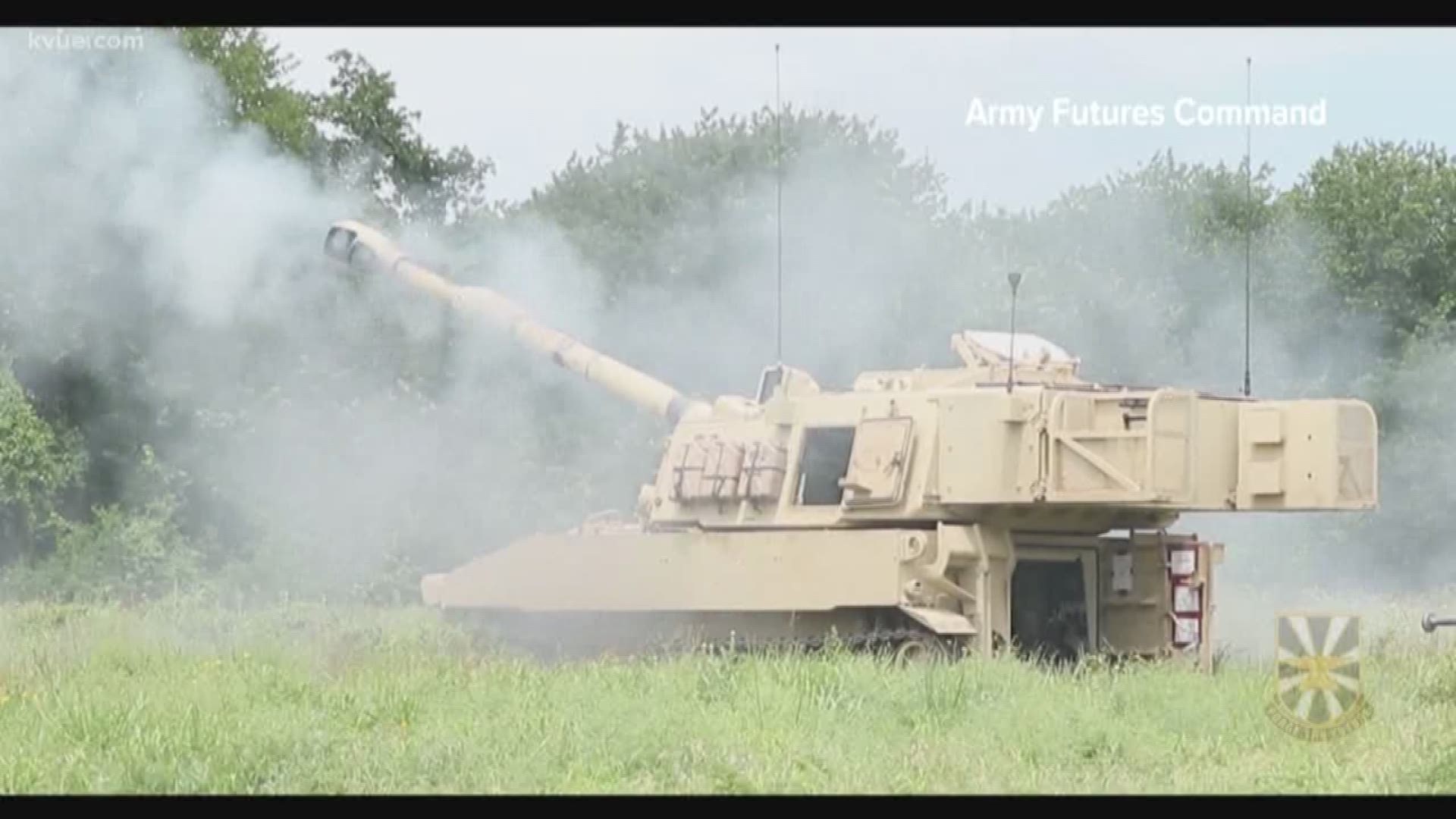AUSTIN, Texas — One branch of the armed services is branching out.
The U.S. Army is looking outside its inner circle to find better, smarter ways to keep soldiers alive.
On Thursday, the Army Applications Laboratory (AAL) revealed some of its main missions and efforts to the public. This section of the Army is focused on connecting the military with entrepreneurs.
Porter Orr is the director of the Army Capabilities Accelerator Program within the AAL. He said this is a new type of connection that the Army is hoping can help find new answers.
"What we're all about here at Army Applications Lab is being a cultural bridge to a community that, quite honestly, the defense and military communities don't typically reach out to," Orr said. "That community is the entrepreneur and the small business community."
RELATED:
The main topic Thursday night was field artillery autonomous resupply. The Army is looking to find civilians who can help figure out ways to reload weapons without involving a soldier.
"How do we save soldiers lives in the future by automating a very manual process today?" Orr said. "We want to try to get the right people in the door to tell us how we can potentially solve that."
Shantez Cosy is someone who would be directly impacted by any type of improvement or change. He has been in the Army for three years and is currently an artilleryman stationed in Fort Hood.
"We pick up our ammo from our ammo pick-up point," Cosy said. "Then we bring it to our guns, load it all up and shoot it."
One of those pieces of ammo is a missile that weighs almost 100 pounds. Cosy usually has to carry this projectile around 500 yards to reload howitzers, which are large cannons. This is usually done around 50 times per day.
"It does a lot of damage to the body," Cosy said. "It does damage to the knees, the back and sometimes even the hands."
RELATED:
John Rafferty is the director of the long-range precision fire cross-functional team for the Army. He grew up in a family connected to the Army and he said America is in a place right now where we have to try new things.
"We still have the best army in the world, but we realize that if we don't begin our modernization now, we'll be at risk of being outgunned in the future," Rafferty said. "While we've been consumed in Iraq and Afghanistan, much of the world has moved out on developing innovative ways to not just to resupply but to innovative weapon systems and more of them."
Rafferty also said reaching out to people outside the Army is something that hasn't been done in the past but could bring about much-needed change.
"Just having a different view of the problem," Rafferty said. "Innovation is potentially the key to offset any adversary advantages."
These people and organizations, many in Austin, can help find the right robots or computers – whatever they come up with – to carry out dangerous tasks so soldiers don't have to.
"Austin is a hub of innovation, and that's why we're here," Orr said. "This is why our headquarters is here. Give them [entrepreneurs] confidence and help them work with the defense industry and the Army."
PEOPLE ARE ALSO READING:

